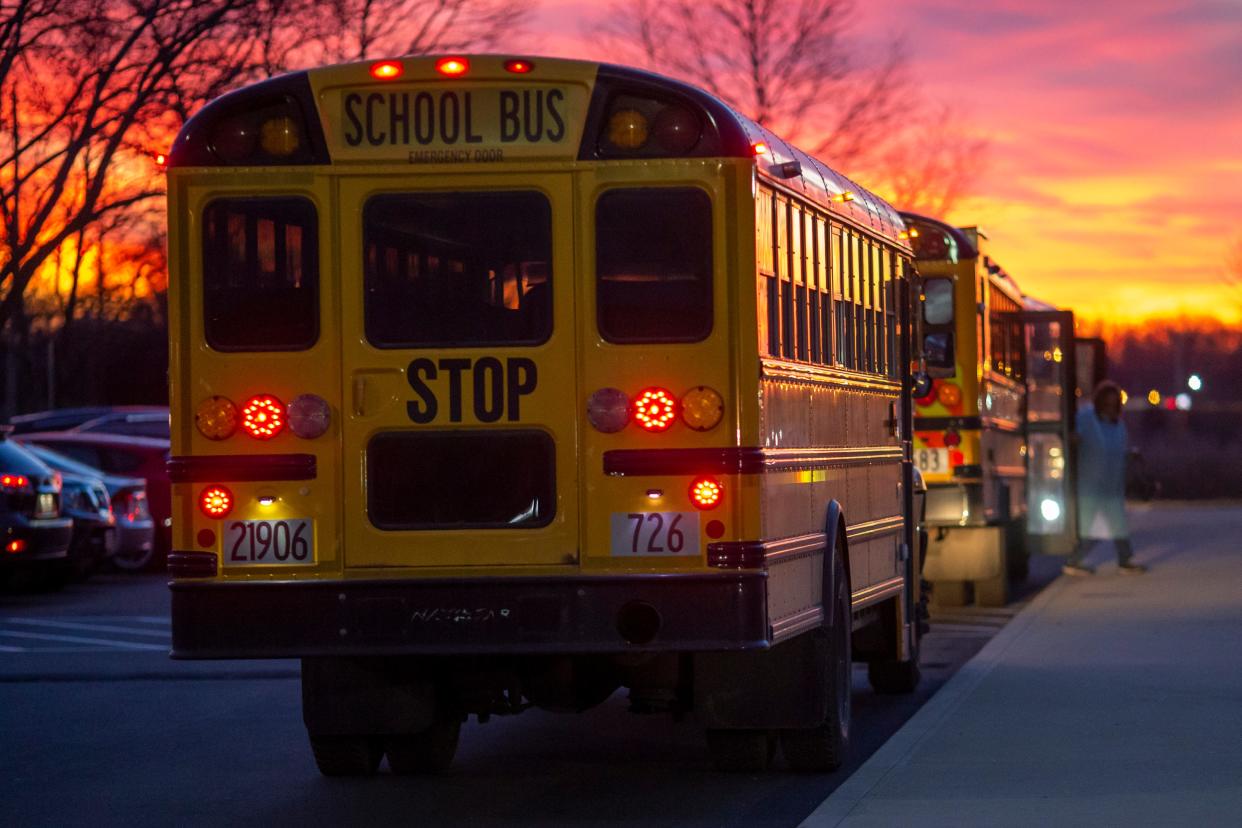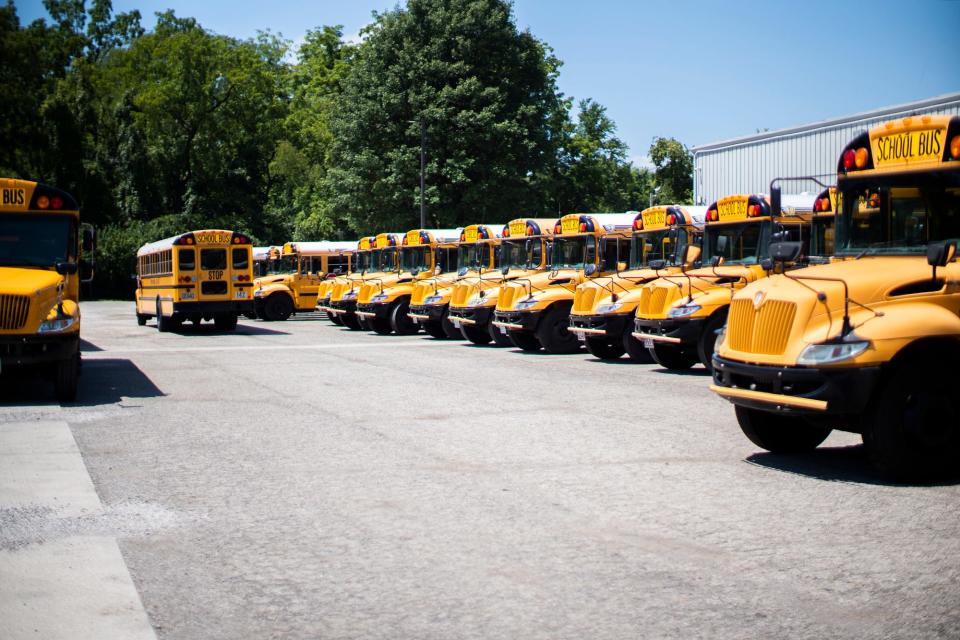The bus driver shortage is here to stay. Are Columbus-area schools ready for Day 1?

With the start of the school year fast approaching, you may have seen a school bus or two in central Ohio emblazoned with banners beckoning you to become a bus driver — with training offered for those without any experience.
Several Greater Columbus school districts, including Gahanna-Jefferson, Groveport Madison and New Albany-Plains, have put up signs seeking qualified drivers to get thousands of local kids to school. It's one of many ways being used to attract talent as a bus driver shortage that was once hoped to be short-lived has morphed into a perennial problem nationwide.
For the past several years, parents and students across central Ohio, in districts from Columbus City Schools to Groveport Madison and Westerville, have experienced staggered starts, interruptions and buses that sometimes simply never show up for pickups or drop-offs.
More: When does my kid go back to school? Here's the start dates for Greater Columbus districts
So, will they be ready this year?
While many of the largest central Ohio districts tell The Dispatch they're prepared with drivers for every route when school starts, many still have persistent concerns about the national bus driver shortage affecting districts.
In spite of making headway on the issue, the struggles are still real for many districts, said Doug Palmer, transportation consultant for the Ohio School Boards Association.
“I wouldn't say the shortage is lessening,” Palmer said. “They've lessened the impact, but a lot of districts still really struggle to get every student to school and get picked up.”
There's a shortage of substitute bus drivers, too
The biggest issue facing districts is a shortage of substitute drivers to temporarily fill vacant routes when someone is sick or out, Palmer said. It's a problem in part because school districts have to compete with all sorts of driving jobs to fill their positions, he said, including package delivery and "gig economy" jobs like ridesharing and food delivery, which offer drivers scheduling freedom that school jobs can't.
“It’s really hard in this economy to find a person who will have the ability to be called in with no schedule,” Palmer said. Like in many other industries, potential substitutes "can't just sit around and wait for someone to call (with a shift) because our bills don't wait.”
Other issues, Palmer said, include drivers retiring due to medical issues or age, which districts can't prevent but for which they can prepare.
State Sen. Andrew Brenner, R-Delaware, said when members of the Ohio General Assembly looked at the issue last year, they found the state lost around 6,000 bus drivers since 2018. In 2021, there were over 18,300 drivers in Ohio.
"There is an issue there," Brenner said.
South-Western City Schools spokesperson Evan Debo said the district filled all 180 routes for next school year, but with only about 10 substitute drivers on hand, it would be difficult to deal with situations if a large number of full-time drivers assigned to routes would be out all at one time.
“You very well could have 10 drivers out on a given day; it's even more evident of the need to go out and do this big hiring push," Debo said.
Recruiting, providing training and hiring contractors
South-Western schools also launched a marketing campaign to promote the benefits of being a bus driver and offers paid training to prospective drivers. Despite the challenges of the job, people who become bus drivers get a reward far greater than the pay, Debo said.
“Our drivers that have been with us — I can’t speak more highly of the efforts they've gone to and the lengths they've gone to — to make sure the kids have gotten to school in the face of those shortages,” Debo said.

Districts such as Groveport Madison Schools, like CCS, have contracted with bus service providers to ease the burden of the driver shortage. Groveport Madison Transportation Director Theresa Ritchie said the district uses Columbus-based Community Bus Service to help fill gaps with the need arises.
The district expects to be able to cover all 61 of its routes for the staggered first days of classes, beginning Aug. 16, with its 71 drivers and seven staff members who have other full-time jobs but are also certified to drive buses.
Westerville City Schools has a MyVans program program, in which it uses smaller vans for students who have special transportation needs, to help pick up the slack where they can, since those drivers don't have to have a commercial driver's license to transport students.
Stretching already thin resources?
Another factor that stretches school transportation resources is a state law that requires public schools to bus nonpublic students to school if they live within the district's boundaries and reside no more than 30 minutes from the school. By law, the district has to get students to school by the start of school. If the districts don't, they risk being fined.
Last year, Columbus City Schools took an additional 12,000 charter and nonpublic students to school on buses on top of 25,000 of its more than 45,000 students at the start of the school year.
"Despite the challenges posed by the overall number of transportation-eligible students we transport, we are committed to addressing them with resilience," district spokesperson Jaqueline Bryant said.
Groveport Madison Schools transports 400 charter school students each day, and Westerville buses about 200 nonpublic students on top of its own 6,600 Westerville students daily.
“It definitely takes some of your resources in terms of vehicles and drivers; I think there's still a general surprise among the public that public schools are responsible for transporting nonpublic students," Westerville schools spokesperson Greg Viebranz said.
Change will take a "collaboration of legislators, public and nonpublic people," and that hasn't happened, Palmer said.
Brenner said state lawmakers are aware of the issue and have been working to solve the problem in a way on which public and nonpublic schools can agree. He said there have been discussions and funding for a pilot program exploring the possibility of regionalizing school transportation within Franklin County.
"Nothing seems to work, nobody comes to an agreement," Brenner said. "The state has been trying."
@Colebehr_report
Cbehrens@dispatch.com
This article originally appeared on The Columbus Dispatch: How will Columbus-area schools deal with bus driver shortages?

